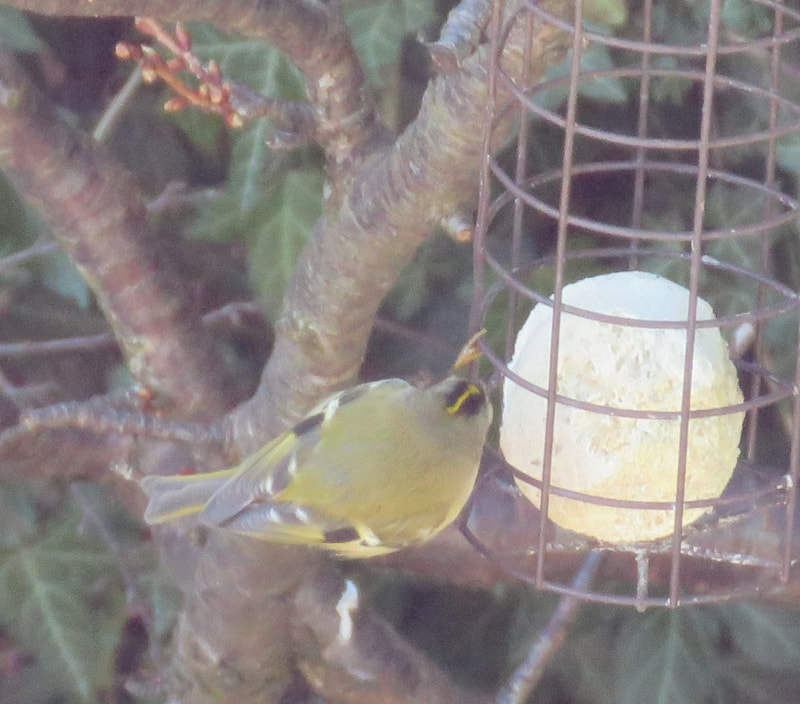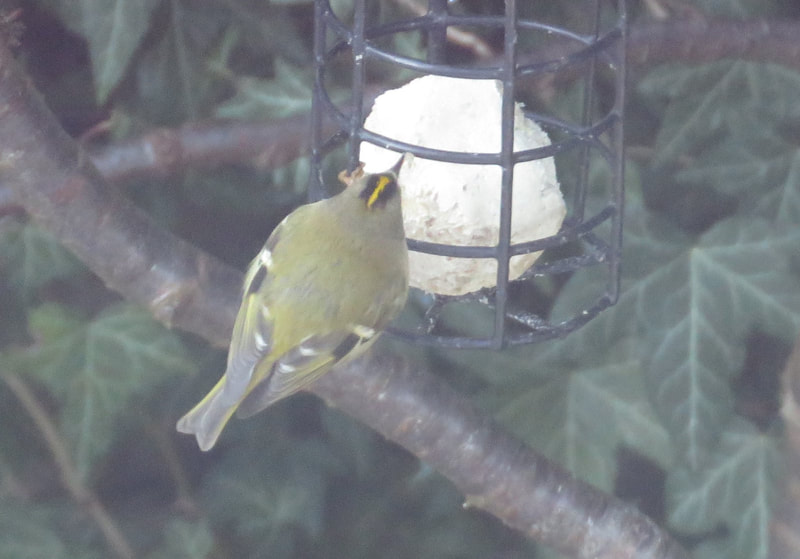
In March 2018 I saw one here on a garden feeder. They're tiny birds, often found high in conifers or in thick foliage so I rarely see them. This afternoon one came to feed on fat balls and I had time to photograph it. The images are not sharp because I had to take them obliquely through double-glazing, but the goldcrest is unmistakeable, and a delight.
The tiny goldcrest is vulnerable in a cold winter and tonight's temperature is forecast to fall to - 7 degrees. I hope this bird can find a snug roosting place, protected from the wind.
Delighted to be home when a goldcrest came calling. I suppose we're all so busy we miss many of our garden visitors. Well, next day a sheet of ice front of house saw me indoors and looking eagerly amongst the blue-tits for the goldcrest. I realised how lucky I'd been to photograph the bird because in mid-January there's an hour when a shaft of light illuminates the feeders, and around that time there's a fusion of light and shadow that's dazzling. I stood in the window watching and a tiny bird alighted on the sill. A second or two of silhouette but that needle-like bill and compact little body spoke to me of goldcrest. They feed on insects, that fine bill probing amongst pine-needles for spiders and moth eggs. Blue-tits seek insects in the mossy crevice of the window sill so perhaps the goldcrest was on the same quest.
Two days later and it's below zero at dawn. No sunrise, just an icy patio and cloud but for the moment I'm on goldcrest watch.
Winterwatch 2024 episode 1. a feature on goldcrest tells of a UK breeding population, numbers swelled in winter by migrants from Scandinavia. With a nanno-tag, weighing 0.16 grams, they've been tracked from the island of Vlieland, the Netherlands, flying 199 miles across the North Sea to Spurn Point. The goldcrests spend between 4-7 days taking on water, feeding furiously to reach optimum weight (about 5-6 grams.) A strong SE tail-wind assisted their flight. On reaching Spurn Point they'll have used up energy reserves and may weigh as little as 3-4 grams. So once again they feed furiously to regain optimum weight. On spring migration they take a shorter Channel crossing, then fly north over the land mass to Scandinavia.







 RSS Feed
RSS Feed